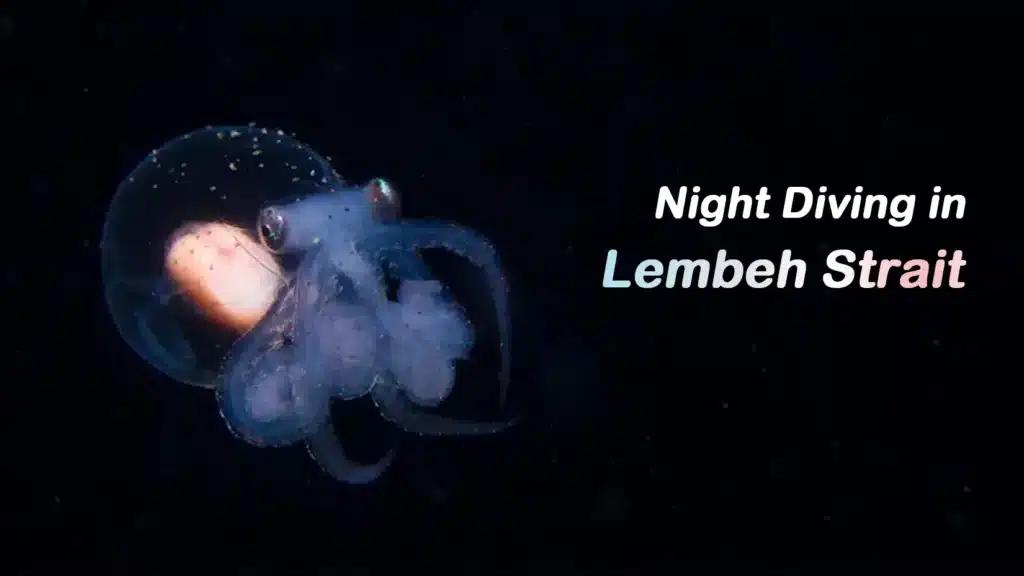Blog
Night Diving in Lembeh Strait: An Unseen Underwater World
Important Diver Certification Notice
Night diving is an advanced diving activity. We highly recommend that you hold at least a PADI Advanced Open Water Diver certification and have completed the PADI Night Diver Specialty course before attempting such dives. Always dive with a certified guide familiar with local conditions.
Introduction
As the sun sets below the horizon, Indonesia’s Lembeh Strait—located in the heart of the Coral Triangle, the global epicenter of marine biodiversity—transforms into a mesmerizing underwater light show. Fluorescent corals twinkle like stars, schools of glowing krill form flowing galaxies, and two-meter-wide manta rays glide silently overhead. This is not science fiction—it’s the real magic of night diving in Lembeh Strait, one of the world’s most extraordinary underwater experiences.
The Unique Allure of Night Diving in Lembeh
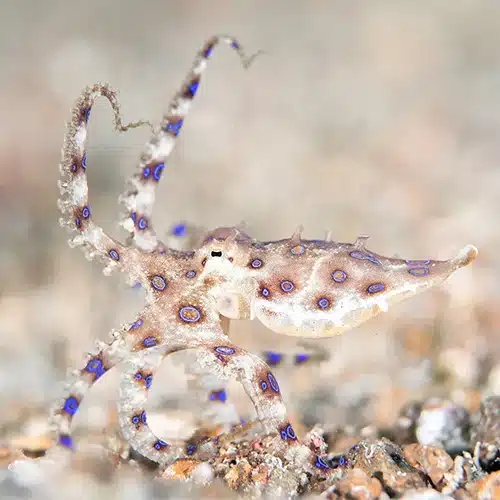
A World Transformed at Night
During the day, Lembeh Strait is home to reef fish, nudibranchs, and sea turtles. But when night falls, a completely different cast of creatures emerges:
• Mimic octopuses stealthily change shape and texture
• Hairy frogfish prowl the seabed—300% more active after dark
• Bioluminescent plankton flash like stardust with every movement
These flashes result from a chemical reaction inside the plankton—a defense mechanism known as the “burglar alarm,” where they emit light to attract larger predators to their attackers. Night diving reveals not only new creatures but an entirely new rhythm of marine life.
Ideal Diving Conditions
Thanks to its sheltered topography and nutrient-rich waters, Lembeh Strait offers:
• Calm, predictable currents for a stress-free diving experience
• Exceptional nighttime visibility, often exceeding 20 meters
These conditions make it an ideal destination even for divers with limited night diving experience.
A Photographer’s Paradise
Lembeh’s famous black sand bottom creates the perfect canvas for underwater photography, especially at night:
• Bioluminescent trails stand out vividly against the dark substrate
• Macro photographers can capture sharp details of rare nocturnal species
• Day versus night photo comparisons highlight dramatic behavioral changes
The Complete Night Diving Guide
Professional Gear Setup
Tanks & Buoyancy System
• Recommended: 12-liter aluminum tank for better buoyancy and mobility
• Configuration: Dual-valve design, starting with at least 200 bar pressure
Lighting System
• Primary torch: 1000–1500 lumens
• Backup torch: At least 500 lumens, preferably from a different brand
• Pro tip: Add a UV torch with a yellow filter to capture fluorescent effects
Team Visibility & Safety
• Fluorescent markers: Attach to tank valves and fin straps for better team visibility
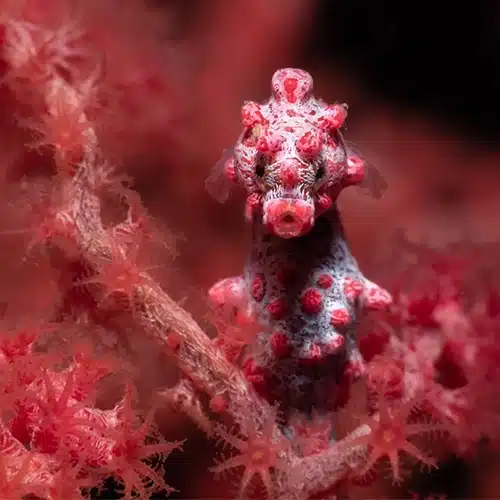
Safety Protocol
Three-Person Team System
• Light operator: Controls illumination
• Marine life spotter: Identifies and directs attention
• Air monitor: Tracks depth and tank pressure
Depth & Air Management
• Check tank pressure every 3 minutes
• Begin ascent at 100 bar
• Never exceed your training or equipment limits
Recommended Dive Sites
Beginner Zone (5–12m)
• Police Pier: Easy stair entry, with coral gardens glowing brilliantly under torchlight
Advanced Zone (15–18m)
• Nudi Falls: Requires compass navigation but rewards with sightings of mimic octopuses, bobtail squids, and other rare species
Night Diving Photography Tips
Essential Camera Settings
• Camera: Manual mode, ISO 800–1600, 1/100s shutter speed
• Smartphone: Use a waterproof housing and attach an external light source
Advanced Techniques
• For bioluminescent trails: Use a tripod and long exposure (10–30 seconds)
• Focus on the creature’s eyes to create emotional impact
• Use the black sand background for striking contrast
• Approach slowly to avoid stirring up sediment
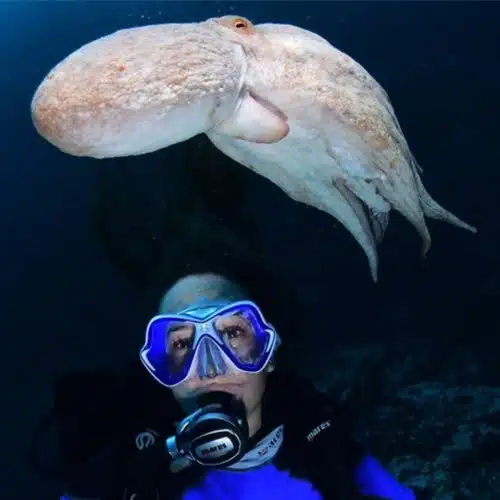
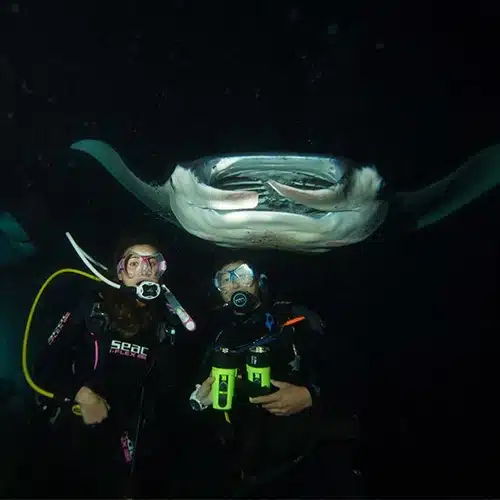
Conservation Guidelines
Responsible night diving helps protect Lembeh’s fragile ecosystem:
• Use red lights for observation to minimize stress on marine life
• Follow a strict no-touch policy
• Maintain at least 2 meters distance from venomous species like the blue-ringed octopus
Practical Information
Best Season: September to October (water temperature around 28°C)
Recommended Dive Operators:
• Lembeh Resort—Excellent guides and full-service packages
• Bastianos Lembeh — A great budget-friendly option
Conclusion
In Lembeh Strait, the day belongs to tourists—but the night reveals its true wonders to explorers. Turn off your torch for a moment and let bioluminescent life paint the darkness around you. The silence, the sparkle, and the sense of otherworldly serenity prove one thing: the most breathtaking spectacles are reserved for the boldest adventurers.
Ready to experience the magic of Lembeh after dark?
Learn more:
- August Global Diving Hotspots
- Urgent! 9 Underwater Emergencies That Require Immediate Ascent
- Why More and More Diving Enthusiasts Are Choosing Mini Scuba Tanks
- Diving in Remote Waters? Here’s Why You Need a Portable Air Compressor
- Freediving vs. Scuba Diving: Which Is Better for You?

